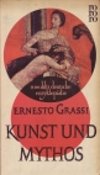Ernesto Grassi (1902–1991)
Autore di Rhetoric as Philosophy: The Humanist Tradition
Sull'Autore
Ernesto Grassi was a professor of philosophy at the University of Munich and director of the Institute of Humanistic and Philosophic Studies.
Serie
Opere di Ernesto Grassi
Schiller : Wallensteins Lager + Die Piccolomini + Wallensteins Tod + Dokumente (1961) — A cura di — 6 copie
Goethe : Römische Elegien + Venetianische Epigramme + Tagebuch der italienischen Reise (1961) — A cura di — 4 copie
Folly and Insanity in Renaissance Literature (Medieval and Renaissance Texts and Studies) (1986) 2 copie
Giacomo Casanova : Memoiren 1 : Bettina : Rom, Paris, Wien : Die Flucht aus den Bleikammern (1925) — A cura di — 2 copie
Opere correlate
Platon. Sämtliche Werke Bd. 1: Apologie des Sokrates, Kriton, Ion, Hippias II, Theages, Alkibiades I, Laches,… (1984) — A cura di, alcune edizioni — 59 copie
Menon, Hippias I, Euthydemos, Menexenos, Kratylos, Lysis, Symposion (1993) — A cura di, alcune edizioni — 19 copie
Parmenides ; Phaedrus ; Sophist ; Theaetetus [Translation] (1977) — A cura di, alcune edizioni — 16 copie
Etichette
Informazioni generali
- Data di nascita
- 1902-05-02
- Data di morte
- 1991-12-22
- Sesso
- male
- Nazionalità
- Italy
- Luogo di nascita
- Milan, Italy
- Luogo di morte
- Munich, Bavaria, Germany
- Attività lavorative
- philosopher
Utenti
Recensioni
Potrebbero anche piacerti
Autori correlati
Statistiche
- Opere
- 27
- Opere correlate
- 7
- Utenti
- 131
- Popolarità
- #154,467
- Voto
- 3.7
- Recensioni
- 2
- ISBN
- 29
- Lingue
- 4
- Preferito da
- 1



